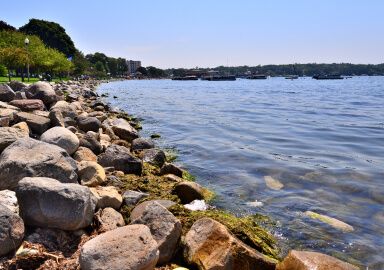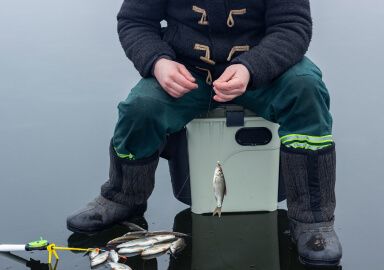Bluegill
Bluegill are a smallish, colourful, freshwater fish of eastern North America.
View 5 listings
5
listings
–
price starting from
1
countries
–
to the nearest trip
Where and When?
Bluegill are found naturally in North America east of the Rocky Mountains and south to Texas and northern Mexico. They have, however, been spread to almost all of the USA as well as Europe, Asia, South Africa and South America. Bluegill live in freshwater, such as streams, lakes, wetlands, dams and even some brackish waters. They prefer being near cover or shade and, although they can be found in deep water, they tend to stay near the surface. Bluegill are not a cold-water fish and prefer being in the temperature range of 16-27°C (60-80°F). They feed much more readily during summer and are most easily caught when the large males are defending “nests” in May to July. Bluegill are generally daylight feeders but often avoid open bright sun and fishing is usually best in the mornings and evenings during hot periods.
About Bluegill
Bluegill (Lepomis macrochirus), also locally called “bream”, “sunny” or “copper nose” are a popular target for sport angling as well as food. They are a disc shaped fish with a small mouth right at the front and a characteristic dark or black spot at the rear of the gill cover. The colour is variable, even within a short time and especially after capture, but the face is usually blue or purple at least at the front. The belly is often a fiery yellow/orange and the body usually has a series of 5-9 vertical darker bands. The normal maximum size is about 30 cm. (12 in.) but exceptionally they can attain 41 cm. (16 in.) and 2 kg. (4.5 lbs.).
Bluegill are omnivorous, eating a wide variety of insects, crustaceans, worms and fish as well as algae. They mature rapidly and are generally sexually active by one year old and males create 15-30 cm. (6-12 in.) diameter spawning areas in May each year. Females are attracted to these and then lay eggs inside the nest, fertilised by males who then protect the eggs and fry. Each female may lay 10-100 thousand eggs annually and, when not involved in spawning, bluegill are usually found in small, loose shoals.
How to Catch?
Many enthusiastic anglers were introduced to fishing through bluegill, and they remain a first-class way to introduce new, young anglers to the sport. Simple light tackle can be used, a wide variety of natural and artificial baits work and bluegill are not easily “spooked”. Small boats may be used but the simplest is often to fish from a bank or pier using very light tackle, small hooks and whatever bait is most easily available.
Bluegill often feed near the surface and so weights are often not necessary, simply cast the worm, insect, grub, piece of corn or plastic towards a weed bed and wait for action. Spinning, using very small spinners also works well and fly fishing, using the smallest flies, can be great fun and very exciting for the very young angler.
Bluegill have often been introduced to waters as “fodder” for larger fish such as bass, but they should not be underestimated. It is often possible to have great fun and excitement, as well as a delicious meal, when fishing an easily accessible local lake, dam or river for this species. Bluegill may not often create adrenaline rushes, but many anglers have favourite fishing memories built around bluegill.
Learn more about bluegill fishing from our blog







